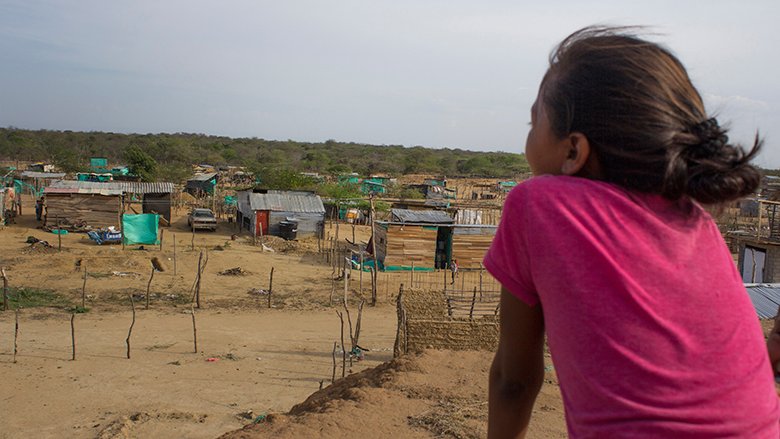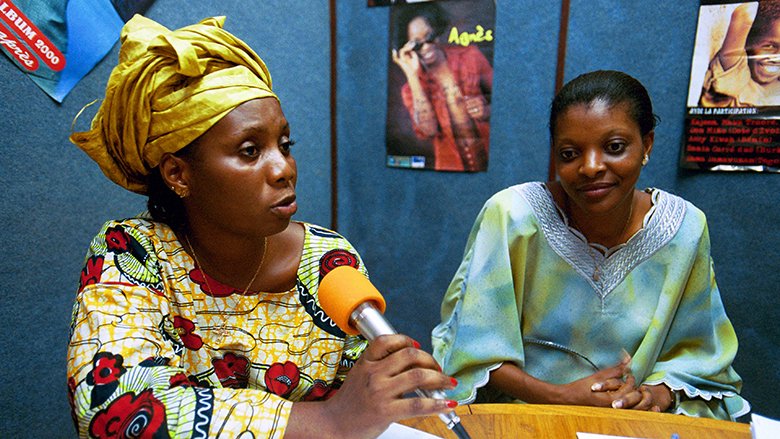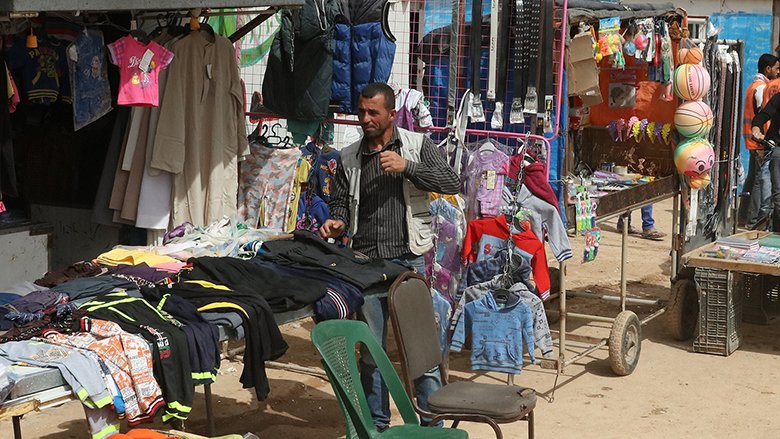The world’s attention is once more focused on the latest massive refugee crisis –this time in Ukraine-- and the plight of those forcibly displaced across international borders. Humanitarian aid is flowing, a colossal logistical operation is ongoing to receive, process, and support those fleeing the war, and people across the world are contributing however they can to offer relief.
Sooner or later, however, the crisis will stabilize; most journalists will leave; other issues will start to headline the news. This was already the case for the majority of the 25 million refugees in the world _before_ the start of the war in Ukraine. But their particular needs didn’t go away, and the opportunities to improve their situation could still be explored and developed. Check out the facts below to learn more about their long-term challenges and the path to sustainable solutions.
1. There are more than 100 million forcibly displaced people for the first time ever.
This figure, updated as of the first few months of 2022, includes those people forcibly displaced within their own countries (internally displaced people), asylum-seekers, Venezuelans displaced abroad, and 27.1 million refugees –the highest ever seen—as a result of persecution, conflict, violence, or human rights violations. This record comes after a decade of steady increase in numbers that show the number of forcibly displaced people has doubled in less than a decade.
2. Three out of 4 refugees remain displaced for five or more years.
Some time after a crisis, refugees fall off the news headlines –but many of them remain displaced for a long time, and they still need support. For example, more than 10 years after the start of the war in Syria, there are still 6.8 million Syrian refugees hosted in 128 countries.
3. Refugees in protracted situations need more than temporary humanitarian aid.
Shelter, food, water and emergency medical aid are essential at the onset of becoming forcibly displaced. When that displacement has no clear end in sight, there is need for jobs that can help make refugees self-sufficient, for longer-term education plans that will allow their children to develop their skills for a better future –whether that’s back in their home country or in their host community—and for the legal framework and policies that can make all this possible.
The World Bank works with hosting countries to include long-term refugees in national support systems that exist for health and education, and to facilitate their access to the formal labor market.
4. Four out of 5 of the world’s refugees live in developing countries.
These countries were already struggling to reach their own development goals when they started receiving refugees from neighboring countries. Accommodating the sudden arrival of vulnerable newcomers presents a challenge for host governments and puts further pressure on their ability to deliver basic services and infrastructure. The World Bank helps countries manage these new circumstances so that they can continue to reduce poverty at home while they provide an accepting environment for refugees.
5. Educating all refugee children would cost 5% of public education expenditure.
Around half of refugees worldwide are below the age of 18 – and a substantial proportion of them are displaced for the entirety of their schooling years. Education is the key to a hopeful future where they can become self-sufficient and contribute back to their communities. A 2021 report by UNHCR and the World Bank estimated that the cost of including refugee children into national education systems would amount to less than 5% of the existing cost of public education in the developing countries that host 82% of the world’s refugees.
6. Displacement affects men and women in different ways.
These differences are present from an early age –refugee girls are less likely than boys to complete school and are, like women, at higher risk for gender-based violence. Women are also affected by other inequalities like, for example, the requirement in some host countries for additional procedures to issue legal proof of identification to women so they can open a bank account, access health or social services, or legally own property. The World Bank has published a series of research papers on the Gender Dimensions of Forced Displacement to expand high quality research that can help inform policy in this area.
7. There's an important role for the private sector in refugee situations.
Business can be a source of jobs. They can provide support for entrepreneurship and make investments that benefit refugees and those hosting them. And they can offer goods and services geared to refugees’ needs. In turn, refugees bring skills, talents, and drive to employment, and as customers they represent revenue for companies.
The World Bank Group's International Finance Corporation (IFC) works with partners to create jobs by boosting access to finance and entrepreneurship, improve the delivery of basic services like education and energy, encourage business-friendly policies in refugee-hosting areas, and share lessons learned.
8. The presence of refugees can bring benefits to host communities.
In Uganda, the presence of refugees has significantly improved access to social services for host communities; in other African countries, it contributed to better economic conditions for all in the medium and long term; and in Peru, the presence of more than a million Venezuelans has helped improve local labor market conditions, reduce crime rates, increase levels of trust between neighbors, and improve satisfaction with public services. These and other studies show that inclusive policies that accord refugees the right to work, freedom of movement, access to social services, as well as property, can promote social and economic integration without causing a backlash.
9. We don't have enough metrics on refugees.
We can easily find total figures on refugees globally and by country (see UNHCR's Global Trends report) but getting an accurate picture of this crisis is hard due to obstacles to obtain quality data on refugees’ and host communities’ social and economic conditions. We need more and better data to learn what works, what doesn't, what policies to formulate and what actions to take in each situation. The World Bank works with UNHCR and other partners on collecting and analyzing data to help inform policies and to improve development programs that can benefit all people affected by forced displacement.
10. Returning is often the main goal for refugees and hosts, but it can be tricky to achieve.
Many conflicts have proven difficult to resolve, often converting to protracted situations. Those that manage to emerge from crisis experience precarious security, economic, and social conditions for many years. Among those who return, resuming their previous way of living is a challenge: some have to flee again or become displaced in their own country as their land and property might be occupied by someone else or the original conflict re-surfaces.
For a development institution like the Bank, the "end point" of engagement with refugees is not about where they live --in exile or back in the home country-- but about whether they remain vulnerable and still need dedicated support.
And, more recently, our efforts are also directed at avoiding the need for a “starting point” by putting a stronger focus on prevention and addressing the root causes of conflict to create more stable societies --so that people will not need to flee.



